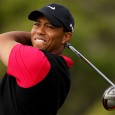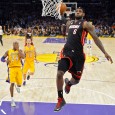 After the squat, the deadlift is the most reliable motion that you can do in the health club. Illustrating the term “compound movement,” it makes use of almost every muscle in your entire body, from your traps all the way down to your calves.
After the squat, the deadlift is the most reliable motion that you can do in the health club. Illustrating the term “compound movement,” it makes use of almost every muscle in your entire body, from your traps all the way down to your calves.
Bodybuilders, competitive lifters, and lots of other athletes have long utilized this movement to build brute strength, pack on muscle mass, and improve their total athletic performance. Right here are 5 reasons every student, casual or competitive, must be deadlifting:
NOTE: If you need expert advice and really want to build some serious muscle with deadlifts, then you need to check this out.
1. The Deadlift Promotes Complete Body Muscular Development
While lots of fitness instructors and trainees alike are quick to merely classify the deadlift as a “back” activity, it is genuinely a full-body workout. At the beginning, the deadlift brings the hamstrings and quads into play to break the weight from the floor. The lower back is likewise promoted from the very starting and remains tense and contracted to keep the weight moving up and back.
From the middle of the range of motion to lockout, the lats, traps, and rhomboids are heavily engaged to keep the weight in near to the body. Finally, the lower arms, arms, and total grip strength are taxed to the restriction to hang on to heavy weights.
2. Constructing the Most significant Back Possible
While the deadlift brings a lot more than the lower and upper backs into play, it is really the best back-builder you can perform. It is important for acquiring that thick aim to your back and general physique that just screams “effective.” At powerlifting meets, the guys with the most significant deadlifts are often sporting the greatest, thickest lats and traps.
In body building shows, the competitors with the most dominating back positions are likewise normally the ones known to be strong deadlifters. Pull-ups and rows are definitely essential, but you will never develop the most established back possible without the deadlift.
3. Developing an Iron Grip
Unless you are making use of lifting straps, the deadlift will certainly develop massive squashing and pinching grip strength. Your forearms and hands grow in strength and size to accommodate the weights that the rest of your body is dealing with.
This improved grip strength is valuable not just for other weight-training exercises, however for any sport in which you grab, hold, or throw items or other competitors. Since your hands are the tools for moving power from the rest of your body to another object, your grip can make or break your overall strength.
4. The Deadlift Imitates Real-Life and Sport Circumstances
While people are fast to toss around the term “practical strength” with little genuine meaning, it definitely likens to the deadlift. The foremost example of this application to real-life circumstances is in picking things up off the ground, particularly heavy things that require a strong back and grip. Furthermore, almost every contact sport includes scenarios such as checking, tackling, and jumping that involve a large, quick transference of energy from the lower body to the upper body or another things.
5. A Great Workout for Your Abs
Just as with any exercise that strongly involves the lower back, the deadlift greatly taxes the abdominals and obliques, too. These muscles tense and tighten up during the activity to assist keep the lower back contracted in a curved position. If you have actually never deadlifted previously, your very first few sessions may very well leave your abs more aching than any targeted abdominal workout you have ever done.
To conclude, every weight trainee should be carrying out the deadlift regularly. It is one of the best movements for developing overall strength and muscle mass, as well as for enhancing everyday and sport-specific efficiency. If you are not performing this movement, you are not understanding your full muscle building capacity. To get more information tips, techniques, and unique methods for the deadlift, read this.




